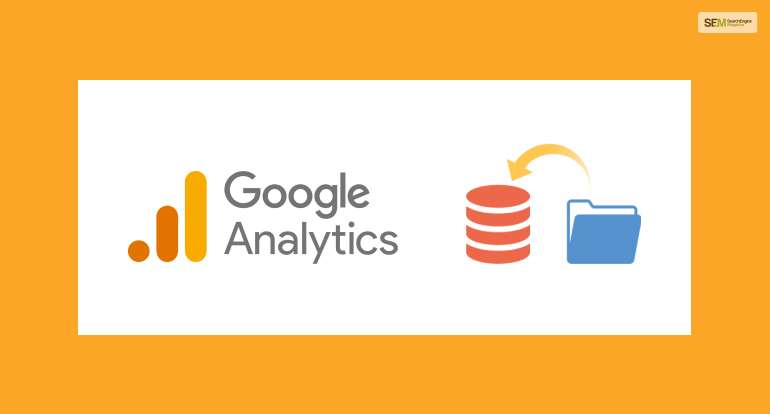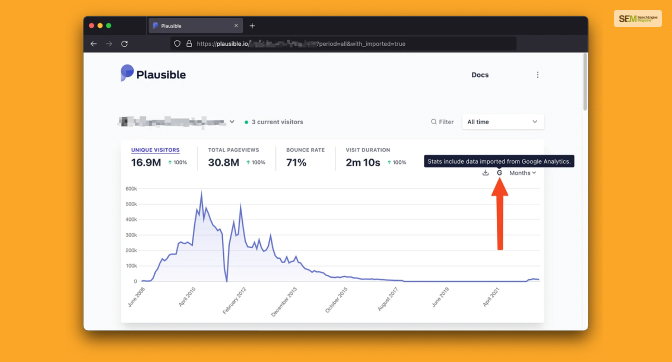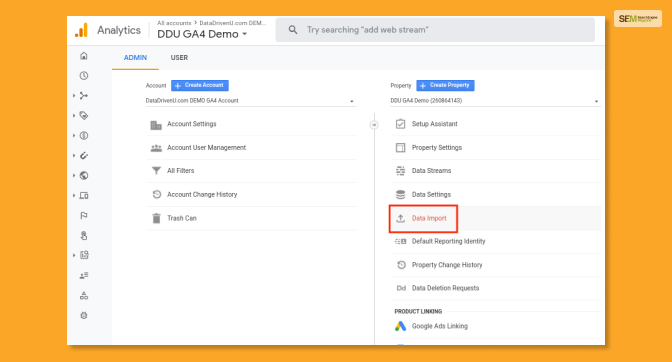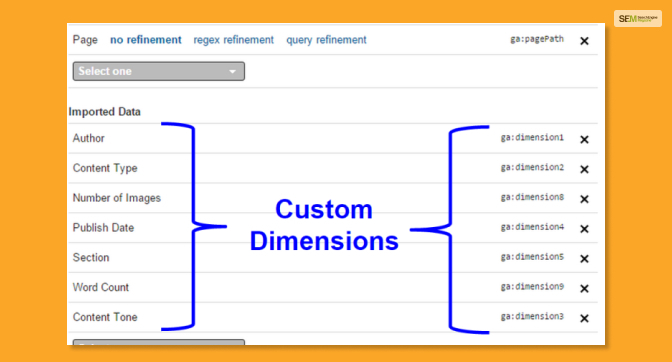How To Know If Someone Blocked You On iMessage? 5 Secret Hacks!
Apr 16, 2025

Apr 16, 2025

Apr 16, 2025

Apr 15, 2025

Apr 11, 2025

Apr 11, 2025

Apr 11, 2025

Apr 08, 2025

Mar 29, 2025
Sorry, but nothing matched your search "". Please try again with some different keywords.


What feature can join offline business systems data with online data collected by Google Analytics?
1. Data Import
2. Goal Tracking
3. User ID
4. AdWords Linking
Right Answer: 1. Data Import
The above question is quite common in exams related to Google Analytics. Here the explanation to this question is interesting. The Data Import feature is beneficial, as it lets you connect the collected Google Analytics data with the data from the offline business systems.
With the help of this feature, you will be easily able to organize all your data, analyze them, and act based on your analysis. The best part about this is that you will be able to view your data based on your specific business needs and unique requirements.
According to Google Analytics Help, “Data Import lets you upload data from external sources and combine it with data you collect via Analytics. You can then use Analytics to organize and analyze all of your data in ways that better reflect your business.”

The Data Import feature in Google Analytics lets you join your offline business systems data with the online data that Google Analytics collects for you. For example, let’s say you are a publisher on the web. You will thus be able to connect the data from the ones collected by Google Analytics with the data which you have exported from your content management systems and CRM systems. This will enable you to analyze various authors’ relative contributions to your published website.
Read More: What Is Not Considered A Default “Medium” In Google Analytics?

Google Analytics Help informs, “If you use a variety of systems and tools to run your business, you can use Analytics to join and analyze that data in one place. For example, you can turn separate CRM data, eCommerce data, and Analytics data into a single comprehensive view of your business.”
The explanation for this query is not only interesting but also reveals how the Data Import feature can be a valuable tool in the hands of experts, including those from Jelvix. Experts at Jelvix leverage Google Analytics as an integral part of their work, and it significantly aids them in their tasks.
With the support of this feature, experts can effortlessly organize the vast pool of data at their disposal. This organized data can then be subjected to rigorous analysis, providing valuable insights and actionable intelligence. Jelvix’s experts, like many others in the field, understand the significance of data-driven decision-making and employ Google Analytics to refine their strategies.
Hence, you can see from here that the Data Import feature in Google Analytics lets you connect and analyze all the data related to your website in one place. This makes your analysis process easier. The business system that you connect with Google Analytics has its own data storage.
For example, your CRM or CMS systems might contain various information like customer-loyalty rating, product preference, lifetime value, etc. Furthermore, your content management systems also contain various details about articles, authors, categories, etc. Apart from that, if you have an eCommerce business, there will be various data and information related to each category.
In all these cases, you will have to use Google Analytics to track your website’s performance as well as the traffic generated by it. This is also true for mobile apps. What the Data Import feature is doing is that it connects the local information with all the information collected by Google Analytics from the web.
Here Google Analytics Help adds, “Data Import lets you join the data generated by your offline business systems with the online data collected by Analytics. This can help you organize, analyze and act upon this unified data view in ways that are better aligned with your specific and unique business needs.”

Finding the Data Import feature in Google Analytics is effortless. The following are the major steps that you will need to follow to use the Data Import feature:
Step 1: Sign in to your Google Analytics account.
Step 2: Click on the ‘Admin’ panel on the Google Analytics page. Once you click on it, a new page will pop up.
Step 3: Navigate to the ‘Property’ section. Here you will be able to choose where to upload your data.
Step 4: Click ‘Data Import’ in the Property column. You will then see a page named ‘Data Sets.’
Step 5: You will now need to select a Data Set from your existing data sets. If you do not have one, you will need to create a new one to bring your imported data.
Once you import your data, you will be able to connect and analyze your data easily using Google Analytics.

There are mainly two types of Data Import options, namely Hit-data import, Extended-data import, and Summary-data import. With the help of this feature, you can send your hit data directly to Google Analytics. These data get added to your Google Analytics property before any processing.
According to Google Analytics, Hit-data import “provides an alternative to using the tracking code, Collection API, the Mobile SDKs, or the Measurement Protocol. Imported hits are added to your Analytics property prior to any processing; therefore, your imported data may be affected by processing-time actions, such as filters.”
Hit-data import only supports Refund Data. You can basically use Google Analytics to connect your internal eCommerce reporting with refund data.
On the other hand, if you want to overwrite information and data, you will need the extended-data import option. According to Google Analytics, “Extended-data import adds to (extends) the data already collected and processed, or being processed, for the selected reporting views.”
The types of data you can use with extended-data import include user data, geographical data, campaign data, content data, product data, and custom data.
Lastly, Summary data import helps you in the case of uploaded metrics. In this case, Google Analytics informs, “Imported summary data is applied to the selected reporting views after all processing and aggregation of collected data.” The type of data supported by Summary data-import includes cost data that includes third-party data as well.
Read More: When Will Google Analytics Be Unable To Identify Sessions From The Same User By Default?
In this article, we have provided you with an answer to the question, “What feature can join offline business systems data with online data collected by Google Analytics?” The Data Import option in Google Analytics helps you to perform that operation. This is one of the most useful features in Google Analytics that lets you analyze your data easily. What other features of Google Analytics do you find useful? Share with us in the comments section.
Read Also:
Inspired by The Social Network, Soumava loves to find ways to make small businesses successful – he spends most of his time analyzing case studies of successful small businesses. With 5+ years of experience in flourishing with a small MarTech company, he knows countless tricks that work in favor of small businesses. His keen interest in finance is what fuels his passion for giving the best advice for small business operations. He loves to invest his time familiarizing himself with the latest business trends and brainstorming ways to apply them. From handling customer feedback to making the right business decisions, you’ll find all the answers with him!
View all Posts
How To Know If Someone Blocked You On iMessag...
Apr 16, 2025
7 Website Design Mistakes That Are Hurting Yo...
Apr 16, 2025
Programmable Dynamic SEO for Location-Based P...
Apr 15, 2025
Google Boba Game: How To Play This Fun Game B...
Apr 11, 2025
Which Is The Best Video Search Engine Of 2025...
Apr 11, 2025

